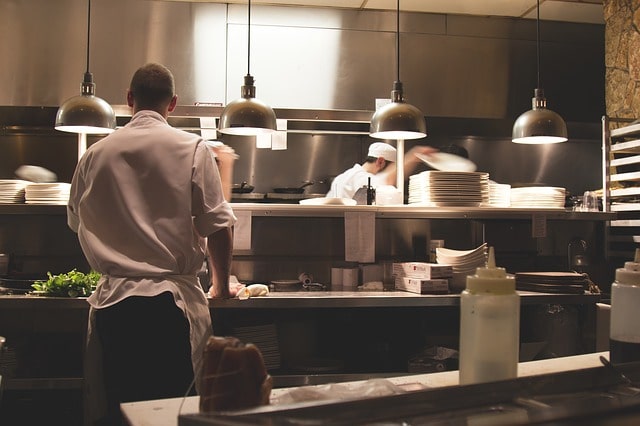Everyone knows that, for food-grade applications, stainless steel is the surface material to beat. In addition to being nearly poreless, stainless steel is much more resistant to rust than its iron-based counterparts and can withstand searing temperatures that would easily melt plastic. This unbeatable protection is due to stainless steel’s tough oxide layer, which allows the material’s surface to stay relatively smooth and blemish-free when cared for properly.
But, benefits aside, there exists no stainless steel that is one-size-fits-all. As a matter of fact, only a select few carry the very traits that ensure the relative impermeability necessary for food-grade tasks. For instance, not all types of stainless steel are as inherently nick- and acid erosion-resistant, fire-resistant, and stain-resistant as others. Below, we’ll discuss three simple guidelines to follow to select stainless steel with the safety and durability necessary to support food-grade applications.

Before you get any closer to selecting the grade of stainless steel desired for your specific application, you must first consider the surfaces you need to protect. Generally speaking, stainless steel is a safe bet for pretty much any surface in a commercial kitchen or food manufacturing facility, as it is smooth, easy to clean, and, by and large, heat and fire resistant. That said, not every application calls for a surface coating of the material. Here are the most common food-grade stainless steel applications via Alliant Metals:
Naturally, stainless steel is also a great candidate for the simplest of food contact zones, like those utilized in small industrial kitchens. In this case, stainless steel is a good option for food preparation and refrigerated areas.
Although most food-grade stainless steel varieties are only considered to be so if they meet a strict set of standards, it is the responsibility of the user to confirm whether or not their investment is up to snuff. This worthiness can be determined by the breakdown of the manufactured stainless steel material, as well as its finish.
For instance, all stainless steel – both food-grade and otherwise – must have a chromium content of at least 11-percent to be considered truly stainless. This high level of chromium offers rust and corrosion-resistant properties in its oxygen-bound top layer. Additionally, it’s important that the chosen stainless steel also contains enough nickel to be considered heat- and, better yet, fire-resistant, a key factor that also extends the lives of surfaces that regularly come into contact with harsh chemicals.
Currently, there are around 150 different types of stainless steel for purchase, but only a select few are appropriate for use in food processing facilities and commercial kitchens. Typically, the food-grade variety is found within the 300 and 400 series of stainless steel, an ultra-smooth, virtually poreless form of the material that is known for its rust-resistant properties.
In order to be included in the 300 series, the stainless steel must be fabricated with 18-percent chromium and 8-percent nickel by mass with a non-magnetic finish. Alternatively, the 400 series consists mostly of chromium fashioned with a smattering of other related chemicals depending upon the fabrication process. This specific finish is magnetic.
Of the 300 and 400 series, these are the most prevalent:
Stainless steel is the top choice of commercial kitchens and food processing facilities everywhere. Be sure to take all of the listed factors into consideration before purchasing, so that you can implement a surface material that pairs best with your needs.
Our sales engineers are experts in automatic asset tracking, tagging and identification,a nd can answer all your questions. Get in touch now.
Lets Talk ›